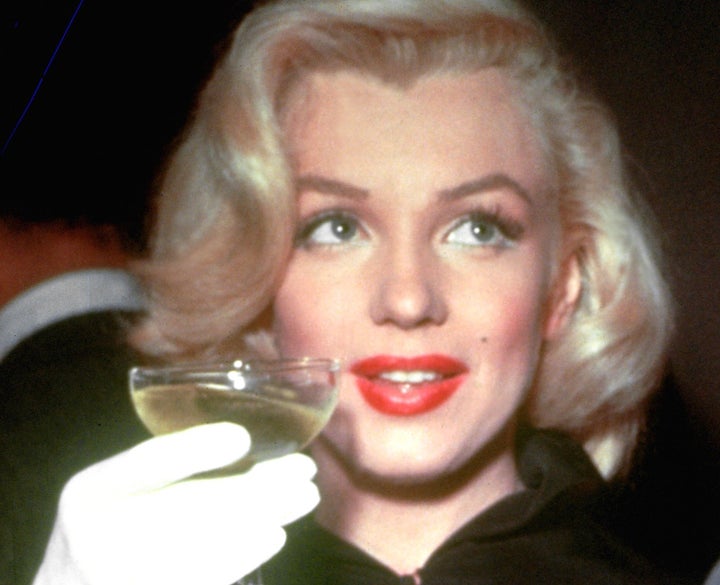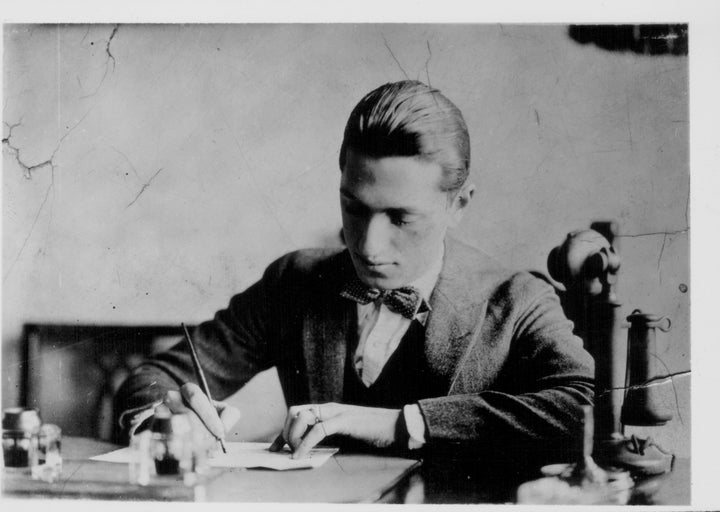
Marilyn Monroe lives in our cultural imagination as one of the most iconic actresses in Hollywood history. But underneath the famous blonde curls and sex-kitten voice, there's a complex woman who likely suffered from borderline personality disorder, according to science journalist Claudia Kalb.
Biographers and commentators have long struggled to make sense of Monroe's contradictory personality. The actress "yearned for love and stability," and yet often lashed out at those she cared about.
"What is clear is that Monroe suffered from severe mental distress," she writes in her stirring new book Andy Warhol Was A Hoarder. "Her symptoms included a feeling of emptiness, a split or confused identity, extreme emotional volatility, unstable relationships, and an impulsivity that drove her to drug addiction and suicide -- all textbook characteristics of a condition called borderline personality disorder."
In the book, published on Feb. 2, Kalb looks beyond the public images of famous historical figures, from Monroe and Warhol to Charles Darwin and Albert Einstein, to offer a glimpse into each celebrity's complex and fascinating inner lives, basing her assertions on extensive research.
HuffPost Science spoke with Kalb about the joys and challenges of dissecting historical and old medical records, Einstein's possible Asperger's Syndrome, whether Darwin had anxiety disorder, in order to combat the stigma around mental illness.
What's the value of posthumously diagnosing mental illness?
My goal was to really put a human face on some of these conditions that we read about and hear about, which can be very complex. I wanted to humanize mental illness and explore it in a way that allows people who are interested -- or thinking about family members or themselves -- to learn more in an accessible way.
The exciting part of that is delving into historical records, reading biographies and autobiographies, letters and generals. This was a three-pronged approach in terms of the research: There’s all of that information, plus medical studies and reports and interviews with mental health experts. So the really exciting part is just digging up history. There were old medical studies, for example, speculating about Charles Darwin’s health and possible anxiety and panic issues way back in the 19th century. It’s amazing seeing these people coming back to life.
What were some of the challenges you faced in putting together these diagnoses?
The main challenge is, how do you assess someone who’s no longer here? How do you do that in a way that makes sense and is authoritative and fair to the person?
I want to be clear that I looked for medical reports that had been published about these people, so all of my storytelling and looking at these conditions was spawned by the theories of people who were looking at them. ... In some of these cases I raised questions and left them a little bit open. For Darwin and Einstein, there’s no consensus on that.
The one thing that’s so interesting and challenging about diagnosing, even today with people who are living, is that you only have a certain amount of evidence available. So you have psychiatrists looking at information and using the best information they can to figure out where it fits in. It’s always a challenge to assess someone’s mind, and my goal was really to introduce people to some of the theories that are out there and to unravel these incredible lives and conditions.
“There do seem to be links between some of these conditions and creativity, and the notion that your brain can operate differently ...”
- Science journalist Claudia Kalb
What’s your take on the link between creativity and mental illness, since most of these people were eminent creative minds?
There’s such interesting research in this area. There do seem to be links between some of these conditions and creativity, and the notion that your brain can operate differently and spark in different ways that are so creative -- some of that does seem to be connected to certain mood disorders.
It’s fascinating and it speaks to the reality of the brain and the mind that you can have both troubling and incredibly exciting elements.
Let’s look at a specific example: What makes you say that George Gershwin may have had attention deficit hyperactivity disorder?
That was kind of a fortuitous connection to a psychiatrist in New York who studied piano at Juilliard, Dr. Richard Kogan. He studies composers and their minds. So this theory stemmed from his hypothesis.
The biographical details he uncovered showed Gershwin’s childhood exuberance, fidgetiness and restlessness -- getting in fights and occasionally stealing food from push carts on the streets of New York -- just his “on the go” energy, which is kind of how people think of ADHD now. In his writings, he said that the ideas come too nice. He was energized by noise, and Rhapsody in Blue arose from the sound and motion on the train. All of the stuff that linked him to movement and energy seemed to echo some of the characteristics of ADHD.
Kogan is hypothesizing that if Gershwin were alive today, the behaviors he exhibited -- given all our focus now on ADHD -- he we would probably get a diagnosis of some sort, possibly ADHD.

What about Einstein, who you suggest may have been on the autism spectrum?
Well, the autism spectrum is so huge. Einstein had these childhood characteristics of late talking, social isolation, being often "in his head" and absorbed by thoughts. He had these characteristics that, were he alive today, you can imagine may have raised red flags, and he might have been screened for autism spectrum disorders.
Even as an adult, Einstein had social issues. He didn’t take great care of his appearance. He was so immersed in his mind and he could sometimes be blunt and brash with people, and it got in his way sometimes. He was often a disorganized lecturer. He was such a genius in his mind but he wasn’t as adept in terms of interacting with people.
Here, I was really pulling from some work done by a British doctor and autism expert named Simon Baron-Cohen. He said that it’s possible Einstein would fit into the Asperger's end of the autism spectrum. He also said that there seems to be a connection between this end of autism and scientific genius.

Do you think that looking at these iconic figures and their unique psychological profiles can help combat stigma around mental illness?
Absolutely. I really hope it can chip away at the stigma because I think there is so much to gain from exploring these conditions and bringing them out in a way that people can understand and identify with -- for people to see aspects of themselves and their family and friends in these conditions.
I want people to come away with the message that the brain is incredibly wonderful and complex, it does so many things. You can be such a genius and achieve so much -- you can struggle, and you can also achieve extraordinary heights in life. I think it speaks to the way we are as humans. We’re all in this together and by looking at famous people that we may know on a superficial level, and to understand their inner lives -- I hope you end up feeling more sympathetic and really identifying with these people.
This interview has been lightly edited for length and clarity.
Also on HuffPost:

